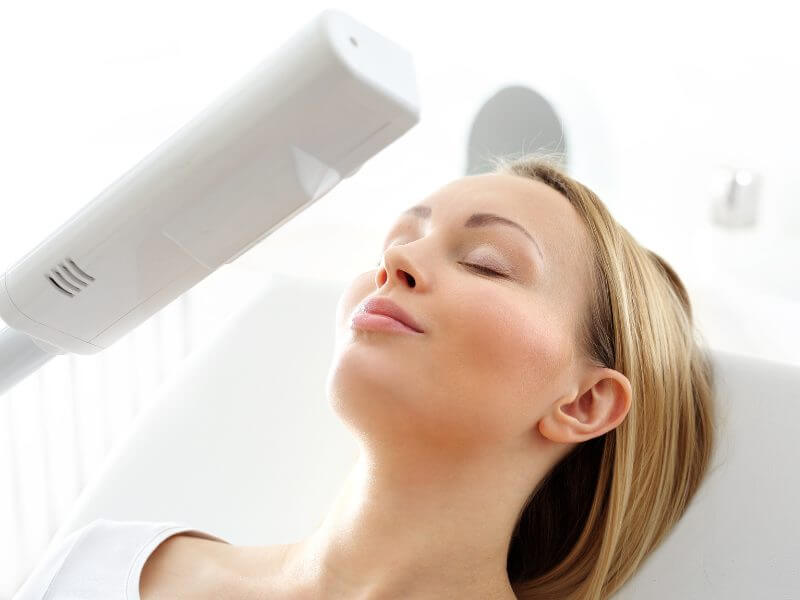
TikTok has introduced us to a bevy of skincare tips, from more helpful ones like the consistent reapplication of sun care products to more toxic ones like using sunscreen as a way to contour your face (don’t!). The latest skincare trend circulating this popular social media platform is skin steaming.
To find out more about what this skincare treatment is all about, and whether or not you should give it a go yourself, read on ahead.
What is Skin Steaming?
Skin steaming is a process that involves exposing the skin on your face to the steam produced by heated water. If you’ve ever taken a long, hot shower or have sat in a sauna, then you have already experienced the effects of skin steaming to an extent.
Should I Steam My Skin?
Like with any skincare treatment, there are pros and cons to incorporating it into your routine, especially depending on your skin type.
As triple-board certified dermatologist Dr. Mamima Turegano explained, “It allows the top layer of your skin, which is called the stratum corneum, to become softer and more permeable and then this allows other contents on the skin like oil, dirt, and bacteria to sort of loosen up a bit more. That allows those contents to be removed more easily.”
@dr.mamina #stitch with @michaelascott20 Basically not totally necessary but should certainly be avoided in conditions triggered by heat, like rosacea, melasma, seborrheic dermatitis, and sometimes eczema. Do you steam your face? And if so, why do you like it? 😁 #dermatologist #facialsteamer #skincarehabits #skinglow #circulation ♬ original sound - Dr. Mamina Turegano, MD
We reached out to Dr. Ekta Yadav, a highly-studied medical doctor and creator of the popular podcast Skincare Anarchy, for the pros and cons of this skincare treatment.
Pros
- Opens Pores: While the idea that pores “open” and “close” is a misconception, warmth from steam can make the skin more pliable and might help in easier extraction of comedones [small, flesh-colored, white, or dark bumps that give the skin a rough texture].
- Increases Blood Circulation: Heat leads to vasodilation, which increases blood flow to the skin.
- Hydration of top skin layers: Steam increases the water content of the stratum corneum (outer layer of the skin).
- Enhances Absorption of other products: Occlusion (increased hydration on the skin surface) can enhance the penetration of some topical agents.
Cons
- Can Irritate the Skin: Prolonged exposure to heat and steam can cause irritant dermatitis in some people.
- Increases the Potential for Burns: Steam can cause thermal burns if the skin is exposed too closely or for too long.
- Worsens Certain Skin Conditions: Warmth and moisture can exacerbate conditions like fungal infections.
- May/Can Cause Broken Capillaries: Excessive heat can exacerbate telangiectasias (dilated superficial blood vessels).
- Dehydration of Skin: Extended steam exposure might strip natural oils, potentially leading to skin dehydration.
“It is more important than ever to understand one’s skin before opting for any type of skincare routine so that you can avoid the cons listed above. Make sure you’re consulting your dermatologist once every year (treat it like an annual physical) and taking the time to truly understand your skin and skin conditions. Steam and other sources of heat can result in exacerbating inflammation of our skin, especially if you’re more on the sensitive side of the spectrum. However, there is definitely an upside to utilizing it for more in-depth skincare routines.
I think the best way to incorporate steaming at home is to keep it limited (once a week for that extra level of pampering and more in-depth skincare routine) and be mindful of any signs of redness or irritation both during and afterward so you understand how your skin responds. Also, sometimes a nice steamy shower may just be all you need to avail the benefits of skin steaming!” says Dr. Yadav.
How Do I Try Out Skin Steaming?
While the skincare technique sounds simple in execution, it’s not as easy as boiling a pot of water and leaning your face over it. There is the potential of boiling water potentially slipping and spilling over your face and skin, we don’t want to risk first or second-degree burns. There is also the risk of the steamed water simply being too hot for your face, as Dr. Yadav concluded, and aggravating already sensitive skin.
There are some pretty serious cons to using an at-home facial steamer as well, as board-certified dermatologist and the American Board of Dermatology fellow Dr. Lily Talakoub points out. At-home steamers can easily become clogged, especially when they’re not properly and regularly cleaned out, which can lead to bacteria forming in the water you are steaming on your face.
“Water, especially in a moist environment, can get a lot of bacteria stuck in it, which can be very dangerous to your skin, but also you can inhale the bacteria as well.”
@drlilyt #greenscreen at home steamers feel GREAT, but are they worth it? #dermatologist #skincare #skin #skincare101 #skincareroutine #facesteamer ♬ original sound - Dr. Lily Talakoub
The best way to incorporate skin steaming into your routine is to take a long hot shower, not too often as hot water can be damaging to the rest of your dermal layer, go to a sauna, or go to an aesthetician to have it done during a facial.
MEET THE EXPERT
Dr. Ekta Yadav, MD MBA MS, is a highly-studied medical doctor and researcher with qualifications from several institutions including Case Western Reserve University School of Medicine. Dr. Yadav took her medical training and her love for all things beauty to create one of the most well-known beauty podcasts Skincare Anarchy.
